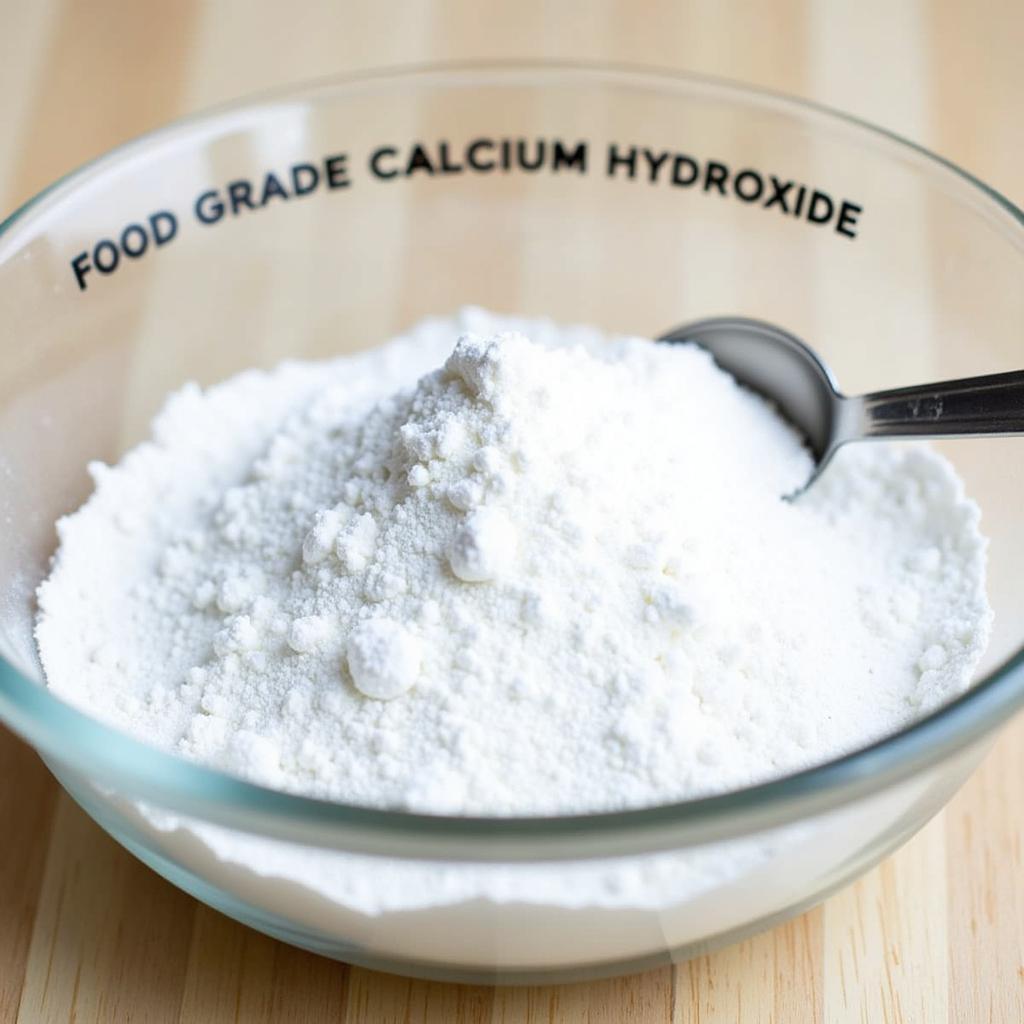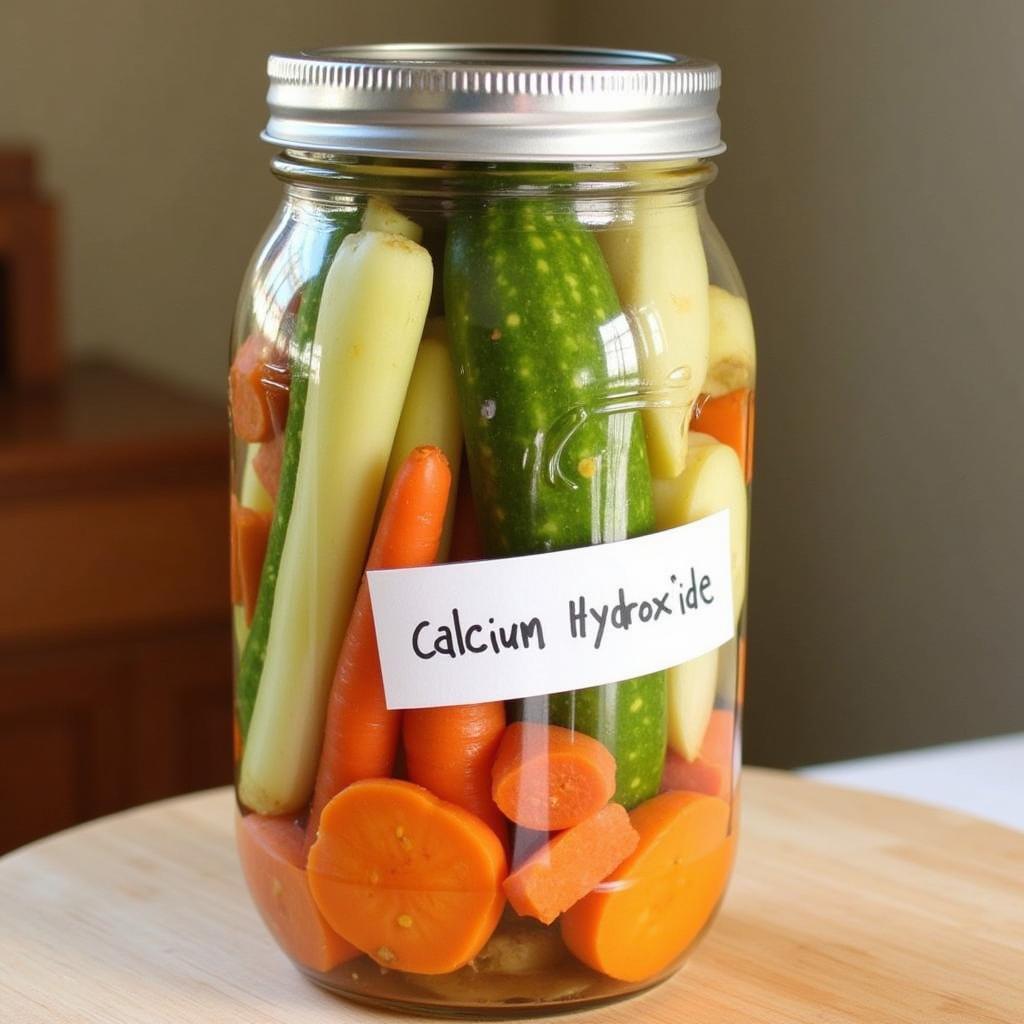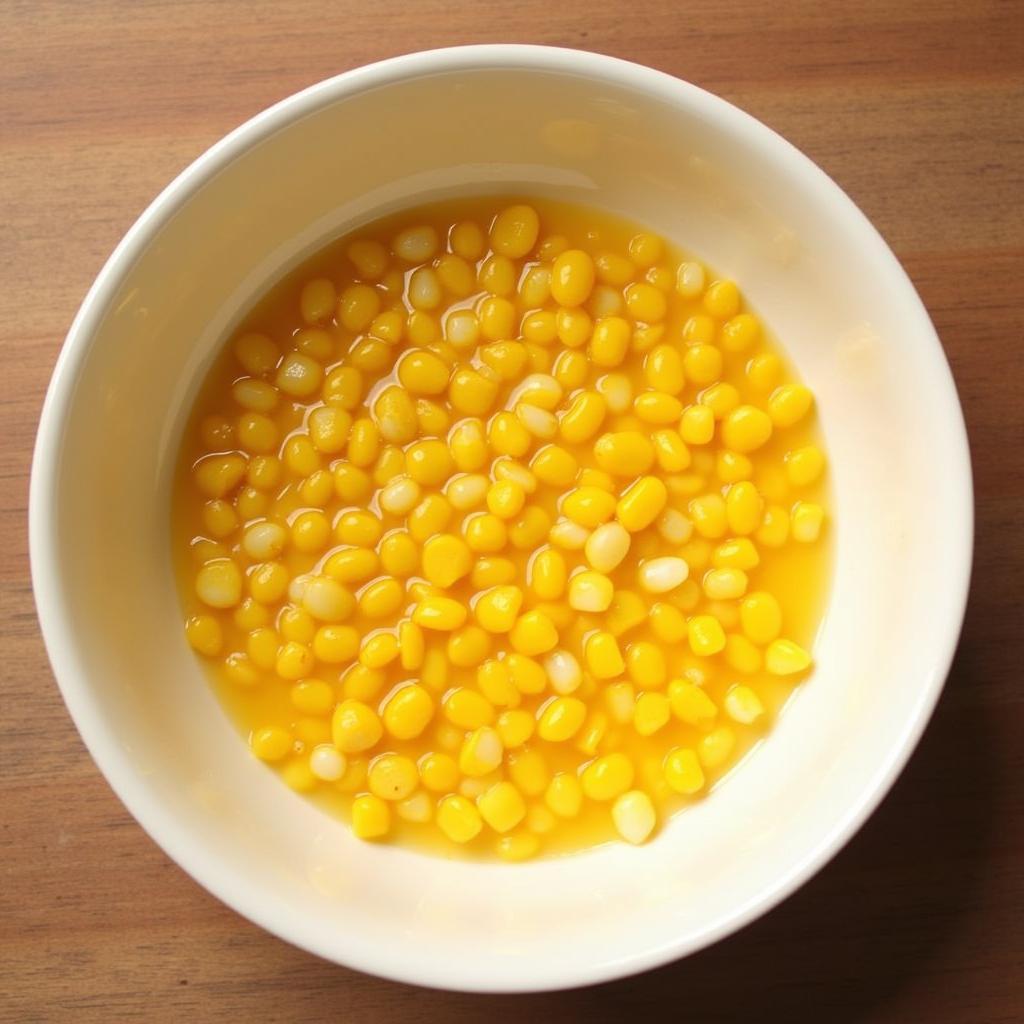Food Grade Calcium Hydroxide – a name that might sound more at home in a chemistry lab than your kitchen. But don’t let the technical term scare you away! This versatile ingredient plays a surprising role in creating some of your favorite culinary delights. Today, we’re diving deep into the world of food grade calcium hydroxide, exploring its uses, benefits, and answering those burning questions you might have.
 Food Grade Calcium Hydroxide Powder
Food Grade Calcium Hydroxide Powder
What is Food Grade Calcium Hydroxide?
In essence, food grade calcium hydroxide, also known as hydrated lime or pickling lime, is a chemical compound with the formula Ca(OH)2. It appears as a white powder and is created by reacting calcium oxide with water, a process called “slaking.”
But here’s the important bit: food grade calcium hydroxide is specifically processed and purified to meet stringent safety standards for human consumption. This sets it apart from industrial-grade calcium hydroxide, which has other applications and can be unsafe for ingestion.
Culinary Uses of Food Grade Calcium Hydroxide
You might be surprised to learn how often you’ve probably enjoyed the benefits of food grade calcium hydroxide without even realizing it! Here are some of its common uses in food:
- Pickling: Calcium hydroxide plays a crucial role in traditional pickling methods. When added to cucumbers, it reacts with pectin in the fruit’s cell walls, creating a firmer, crispier texture. This is especially important for fermented pickles, where it helps prevent the cucumbers from becoming mushy during the fermentation process.
- Tortillas and Corn Products: In Mexican and Central American cuisine, calcium hydroxide is used to process corn, a process known as “nixtamalization.” This traditional technique makes the corn more digestible and releases niacin (vitamin B3), making it more nutritious. Nixtamalized corn is used to make tortillas, hominy, and other corn-based products.
- Fruit and Vegetable Preservation: Calcium hydroxide can be used to preserve fruits and vegetables, extending their shelf life. It reacts with the natural acids in produce, creating calcium salts that help maintain firmness and prevent spoilage.
 Pickled Vegetables in Jar
Pickled Vegetables in Jar
Benefits of Using Food Grade Calcium Hydroxide
Beyond its specific culinary applications, food grade calcium hydroxide offers several benefits:
- Enhanced Texture: As mentioned earlier, it plays a vital role in achieving that perfect crunch in pickles and a firm texture in processed fruits and vegetables.
- Increased Nutritional Value: The nixtamalization process using calcium hydroxide significantly improves the nutritional profile of corn products by increasing their niacin content.
- Natural Preservative: Calcium hydroxide acts as a natural preservative, extending the shelf life of various foods and reducing food waste.
Common Questions about Food Grade Calcium Hydroxide
Is food grade calcium hydroxide safe to eat?
Yes, food grade calcium hydroxide is safe for consumption when used in appropriate quantities. It’s important to follow recommended recipes and guidelines to ensure safety.
Where can I buy food grade calcium hydroxide?
You can find food grade calcium hydroxide online, at specialty grocery stores, or at Latin American markets (often labeled as “cal” or “pickling lime”).
What’s the difference between food grade and industrial-grade calcium hydroxide?
Food grade calcium hydroxide undergoes rigorous purification processes to ensure it’s safe for human consumption. Industrial-grade calcium hydroxide is not intended for food use and may contain impurities.
 Nixtamalized Corn
Nixtamalized Corn
Food Grade Calcium Hydroxide: A Kitchen Essential?
While not an everyday pantry staple for everyone, food grade calcium hydroxide can be a valuable asset for home cooks and food enthusiasts. Its unique properties make it a valuable ingredient for pickling, preserving, and enhancing the texture and nutritional value of certain foods. So, the next time you bite into a crunchy pickle or enjoy a delicious corn tortilla, remember the unsung hero behind the scenes – food grade calcium hydroxide!
FAQ
-
Can I substitute regular lime for food grade calcium hydroxide?
No, regular limes and food grade calcium hydroxide are not interchangeable. Limes contain citric acid, while calcium hydroxide is an alkaline substance. -
How much food grade calcium hydroxide do I need for pickling?
The amount varies depending on the recipe and type of pickle. Always refer to a trusted recipe for specific measurements. -
Can I reuse pickling lime?
It is not recommended to reuse pickling lime as it can absorb impurities during the pickling process. -
What happens if I use too much food grade calcium hydroxide?
Using excessive amounts can result in an unpleasant taste and texture in food. Always follow recipe instructions carefully. -
Does food grade calcium hydroxide need to be dissolved before use?
Depending on the application, it may need to be dissolved in water to form a limewater solution. Consult your recipe for specific instructions.
Need More Help?
Have more questions about food grade calcium hydroxide or other culinary conundrums? Don’t hesitate to reach out! Our team of food enthusiasts at Mina Cones Food is here to help. Contact us at:
Phone Number: 02437655121
Email: minacones@gmail.com
Address: 3PGH+8R9, ĐT70A, thôn Trung, Bắc Từ Liêm, Hà Nội, Việt Nam.
Our customer support team is available 24/7 to assist you with all your food-related inquiries.